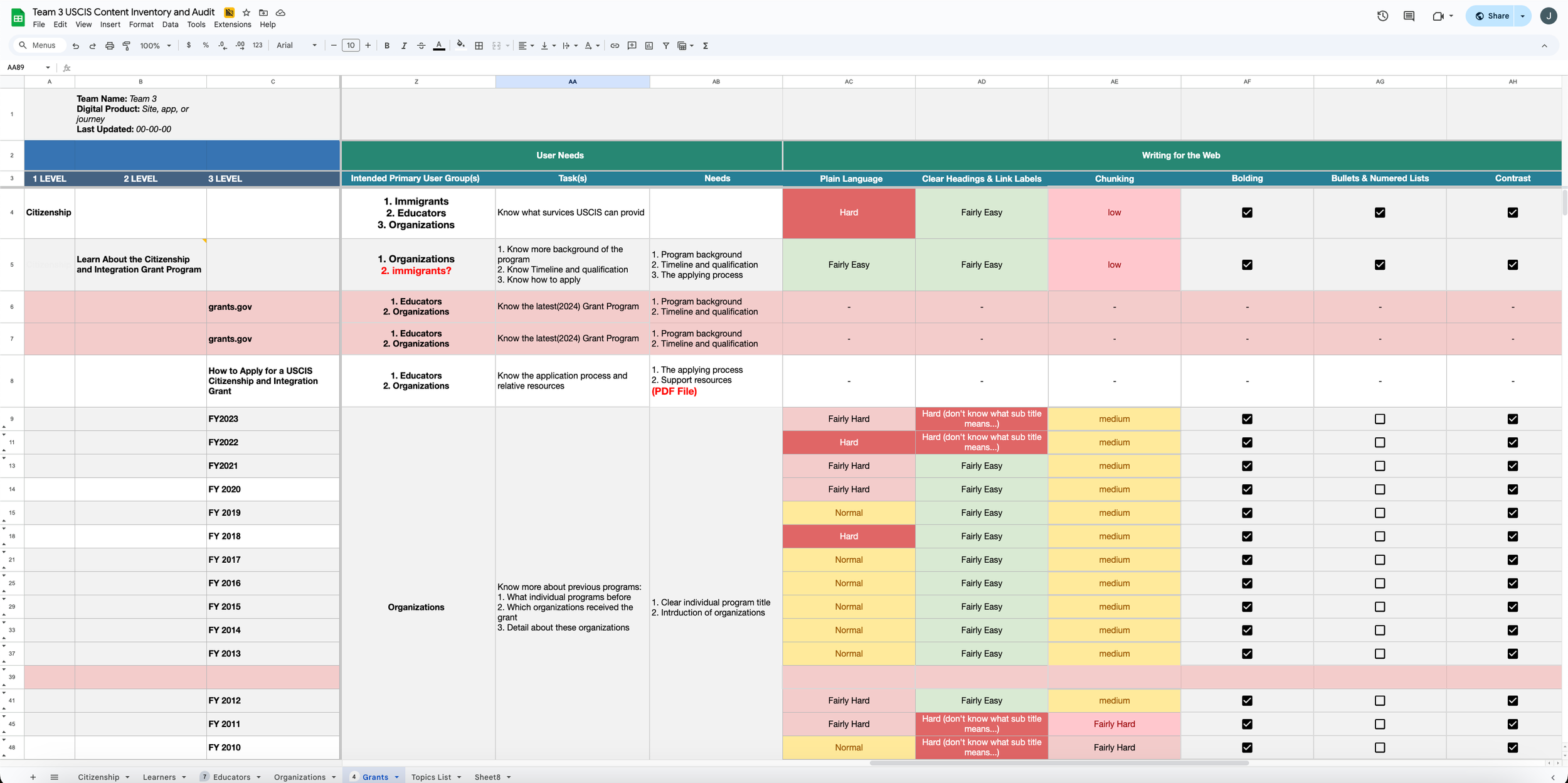USCIS Web Redesign - Citizenship Resource Center
Context
This semester, the Information Architecture course collaborates with USCIS (United States Citizenship and Immigration Services) to streamline the website’s information architecture. We aim to help users, mainly immigrants, educators, and related organizations, find the information they need more easily.
My Role
Information Architecture
Team
Jesse, Anjana, Ming-Han, Parth, Jonathan
Tools
Figma, Miro, Excel, Screaming Frog, Card Sorting, Site-map
Timeline
Sept - Dec 2024
PROBLEM
Aspiring U.S. immigrants find it challenging to search for specific information on the USCIS website, leading to frustrating experiences.
At the beginning of the semester, we were provided with a spreadsheet by Hope Turner, the Design System Program Manager at USCIS, which contains a customer feedback report from the years 2023 and 2024.
From this bar chart, we can see that users are mostly struggling to find content related to citizenship, certificate, and naturalization.
RESEARCH
To fix the site, we have to first understand the site
The first approach we took was to conduct a content inventory and audit to see what information already existed, how it was organized, and where there were gaps, redundancies, or inconsistencies. This helped us establish a baseline of the site’s structure and identify opportunities for improvement.
To accomplish this, we used a tool called Screaming Frog 🐸 to conduct an auto-crawl of the site and quickly identify broken links. Next, we conducted a manual crawl of the most important links, particularly those related to citizenship, certificates, and naturalization.
Once the content inventory was completed, we conducted a full audit to evaluate the quality, accuracy, and relevance of the content. This allowed us to flag outdated pages, consolidate overlapping information, and highlight areas where clearer content was needed.
Together, the inventory and audit provided a roadmap for restructuring the site, improving navigation, and ensuring that critical information was both accessible and easy to understand.
USER PERSONAS
CARD SORTING
We conducted two sets of card sorting exercises to help us understand our users mental models.
CARD SORTING







